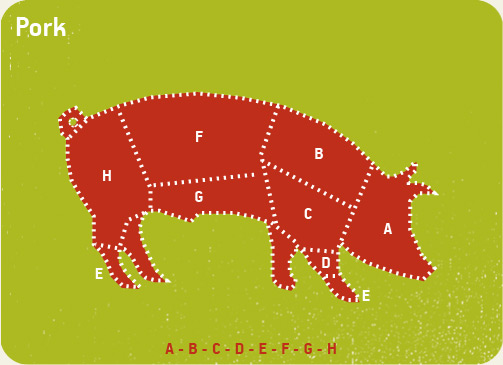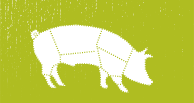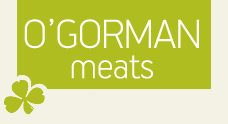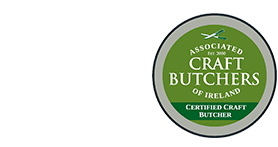Nutritional benefits
of Pork
- A good source of lean, high quality protein - essential for growth, muscle repair and the regulation of body functions
- Lean pork is low fat and is only very slightly higher in total fats than beef
- A good source of zinc, selenium, phosphorous and potassium
- Contains a good range of B vitamins which are essential for growth and the development of a healthy nervous system
All nutritional information provided by:
BALANCE, Nutritional and Lifestyle Advice.
Contact on: 086 1203460

A - The Head
- Used to make meat jelly.
B - Spare Rib Roast - Large joint from the shoulder and is one of the prime roasting joints. Can also be cured as collar bacon and can be boiled or baked. e.g. spare ribs.
C - Hand - Cured on the bone and boiled, makes picnic ham. Can also be slowly cooked to end up falling off the bone.
B/C - Shoulder - On-the-bone roasting joint, excellent for slow roasting. May be cubed for stir frys or used in pork pies.
D - Hock - Can be used to make pork stocks or can be added to a stew to give body.
E - Trotters - Pigs’ feet used to make stocks and brawn.
F - Loin - Gives a lean roasting joint, although too big for most ovens – often called a rack of pork. This cut can also be cut into chops for frying, grilling or roasting. Rashers are also cut from the loin.
G - Belly - Used to make streaky bacon, but can also be slowly roasted in the oven for a few hours. Spare ribs from the belly – usually marinated in a sweet & sour, barbecue or sweet chilli sauce and then baked or barbecued until they fall off the bone.
H - Leg / Ham - Most legs of pork go for curing to make hams. Bake ham in oven and serve hot. Can be used the next day served cold.
B - Spare Rib Roast - Large joint from the shoulder and is one of the prime roasting joints. Can also be cured as collar bacon and can be boiled or baked. e.g. spare ribs.
C - Hand - Cured on the bone and boiled, makes picnic ham. Can also be slowly cooked to end up falling off the bone.
B/C - Shoulder - On-the-bone roasting joint, excellent for slow roasting. May be cubed for stir frys or used in pork pies.
D - Hock - Can be used to make pork stocks or can be added to a stew to give body.
E - Trotters - Pigs’ feet used to make stocks and brawn.
F - Loin - Gives a lean roasting joint, although too big for most ovens – often called a rack of pork. This cut can also be cut into chops for frying, grilling or roasting. Rashers are also cut from the loin.
G - Belly - Used to make streaky bacon, but can also be slowly roasted in the oven for a few hours. Spare ribs from the belly – usually marinated in a sweet & sour, barbecue or sweet chilli sauce and then baked or barbecued until they fall off the bone.
H - Leg / Ham - Most legs of pork go for curing to make hams. Bake ham in oven and serve hot. Can be used the next day served cold.





